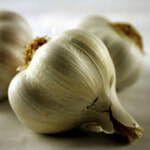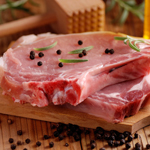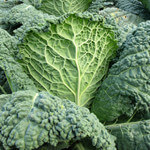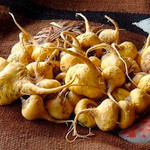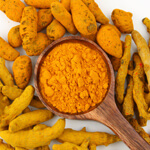 Tens of millions of people around the world live with acute or chronic pain, and their desperate attempts to alleviate it has made prescription painkillers a billion dollar industry. Unfortunately, prescription painkillers often contribute to more problems than they cure. In fact, according to the Centers for Disease Control, painkillers such as oxycodone and methadone are the leading causes of overdose deaths in the United States today.
Tens of millions of people around the world live with acute or chronic pain, and their desperate attempts to alleviate it has made prescription painkillers a billion dollar industry. Unfortunately, prescription painkillers often contribute to more problems than they cure. In fact, according to the Centers for Disease Control, painkillers such as oxycodone and methadone are the leading causes of overdose deaths in the United States today.
Fortunately, nature has provided us with numerous herbs that contain significant analgesic properties. While not all of these foods are as aggressive as prescription painkillers, they are much safer to consume and lack their unpleasant side effects.
White Willow
White willow is the most famous of the 300 willow species, and its bark enjoys a time-honored reputation as a natural analgesic. Indeed, the Chinese were known to use white willow bark for pain relief as far back as 500 B.C. In the West, American Indians often used it to treat inflammation.
White willow works as a painkiller because it contains a glucoside called salicin, which possesses proven anti-inflammatory and anti-neuralgic properties. For example, a study published in The American Journal of Medicine in 2000 found that white willow-derived salicin was more effective at easing lower back pain than the placebo.
White pillow bark can be consumed in powdered or tincture form. It is a much more natural painkiller than Aspirin, whose principal ingredient is actually salicin.
Turmeric
Turmeric has been used in traditional medicine for centuries to treat sprains, bruises, and inflammation in the joints and stomach, and scientists now understand how it works. This warm, bitter plant owes its distinctive yellow hues to its rich concentrations of curcumin, a compound with proven anti-cancer, antioxidant, and analgesic properties. One study featured in The Korean Journal of Pain, for instance, discovered that curcumin could decrease inflammatory pain in rats. Another study, published in Surgical Endoscopy, concluded that curcumin could improve postoperative pain and fatigue.
Turmeric powder is usually added to curries and other rice dishes, but it can also be taken as a health supplement. Remember to purchase non-irradiated powder when possible for maximum benefits.
Corydalis
Corydalis is another herb with a long history of use for pain relief. Chinese medicine is particularly fond of it, and often prescribes it for headaches, migraines, and menstrual pain. Corydalis was even recommended to individuals who suffered from back pain caused by muscle spasms and nerve problems.
Though studies into corydalis’ analgesic properties are limited, we know that it is rich in a compound called dehydrocorybulbine (DHCB). A study published in Current Biology in January 2014 found that DHCB was effective against “inflammatory pain and injury-induced neuropathic pain,” leading the researchers to conclude that DHCB is a “promising lead in pain management.”
Corydalis is commonly found in Chinese herbal stores. It can be purchased as granules, which should be dissolved in hot water and sipped throughout the day, or in capsule form.
Devil’s Claw
Devil’s claw is a herb native to southern Africa that gets its name from the small hooks that cover its fruit. Though it was mostly consumed as a medicine to treat conditions ranging from pain to malaria, natives also used it as an ointment to heal boils, sores, and other skin ailments.
Devil’s claw contains three active ingredients – harpagoside, harpagide, and procumbine – that are responsible for its anti-inflammatory and analgesic properties. Harpagoside seems to be especially effective in this regard and, according to a study published in Farmaco in 1996, had a “small but significant” anti-inflammatory effect on rat paw edema. Furthermore, a study published in Schmerz in 2001 found that devil’s claw could reduce muscle stiffness.
Devil’s claw is easy to find online or in health food stores. It is usually taken in powdered or tincture form, though it can also be drunk as a tea if you can tolerate its bitter taste.


